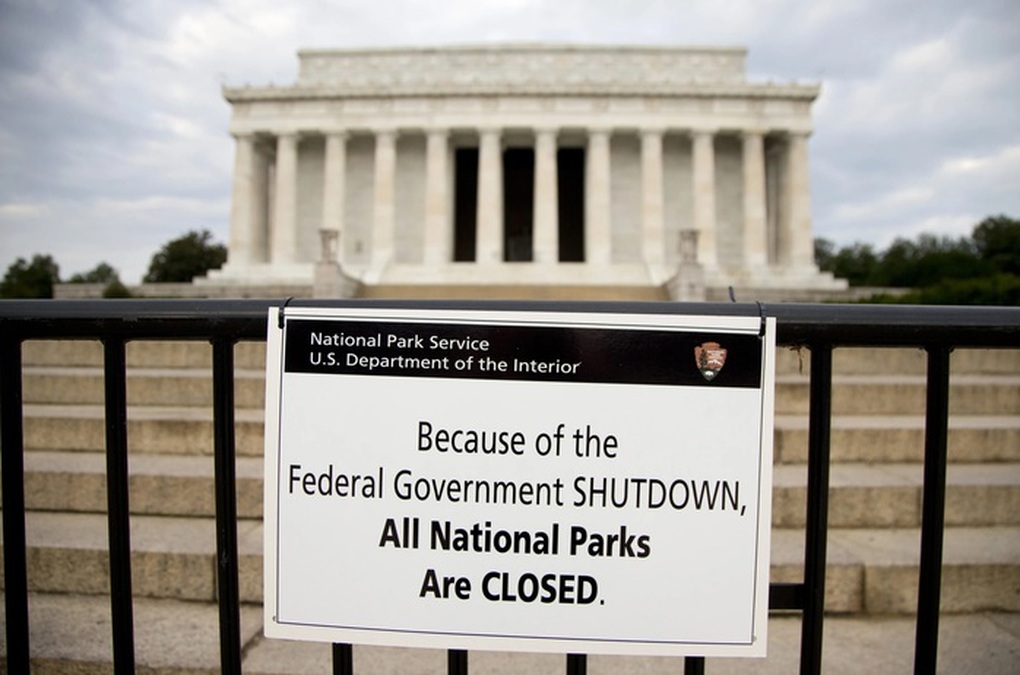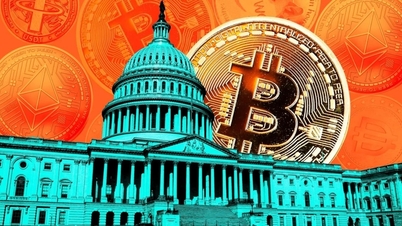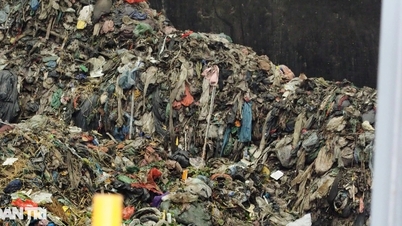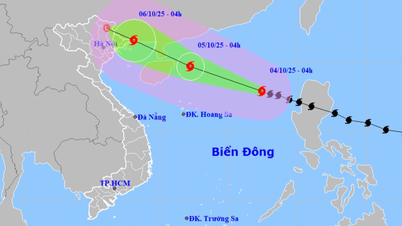Since October 1, the US government has officially shut down after Congress fell into a deadlock, the Senate failed to pass a temporary budget measure to maintain operations in the voting session on the evening of September 30.
Republicans insist that Democrats simply agree to extend the current funding level for another seven weeks, while Democrats refuse to do so without major concessions in exchange for a vote to pass any budget bill in the Senate.
About 750,000 federal employees will be furloughed, while essential workers such as Transportation Security Administration (TSA) officers, air traffic controllers, federal law enforcement officers and military personnel will be forced to work without pay, the Congressional Budget Office (CBO) said.
History shows that this is not the first time this has happened.
There have been 14 US government shutdowns since 1980. In previous shutdowns, hundreds of thousands of government workers were furloughed and many public services were disrupted.
During the 2013 government shutdown, about 850,000 workers were furloughed, out of a federal workforce of more than 2 million, according to data from the Committee for a Responsible Budget.

A sign reading “Due to the federal government shutdown, all national parks are closed” hung in 2013 (Photo: AP).
According to CNBC, when the US government shuts down, federal employees doing non-essential jobs will be temporarily laid off, meaning they will not receive pay during this time.
While furloughed employees are guaranteed pay when they return to work, federal contractors often go without pay during this time. The lost paychecks not only affect the livelihoods of millions of federal employees, but also the broader economy , as spending falls during the time without pay.
Non-essential services and programs will be directly affected during a government shutdown. These programs are subject to annual budgets.
During previous shutdowns, hundreds of national parks and museums were closed, veteran services were limited, health screenings were suspended, and many immigration hearings were postponed.
The CBO estimates that the most recent shutdown, which lasted five weeks, reduced economic output by $11 billion.
“The impact of a government shutdown on business activity is uncertain, and its magnitude will depend on the duration of the shutdown and the decisions made by the administration,” CBO noted in its September 30 report.
Economists are particularly concerned about proposals to use the shutdown to permanently lay off federal employees, which could pose a serious threat to an already weak US labor market.
However, Andrew Hollenhorst, an economist at Citi, commented that it was "unclear how many employees will actually be laid off permanently".
Another notable consequence of the government shutdown is the delay in the release of the September jobs report – a key economic data point that was scheduled to be released on October 3.
The report includes the latest figures on nonfarm payrolls and the unemployment rate - key indicators of the health of the US economy.
The jobs report is important for policymakers at the US Federal Reserve (Fed) ahead of its October meeting. Many investors are predicting the Fed will cut interest rates by another 0.25 percentage points at the next meeting.
According to Wells Fargo economist Michael Pugliese, after the 2013 government shutdown, monthly employment and consumer price index (CPI) reports were delayed by about two weeks. During the partial government shutdown in late 2018, the GDP growth report for the fourth quarter of that year was also delayed by about a month.
Source: https://dantri.com.vn/kinh-doanh/dieu-gi-se-xay-ra-khi-chinh-phu-my-dong-cua-20251002014336317.htm



![[Photo] Prime Minister Pham Minh Chinh chairs meeting to deploy overcoming consequences of storm No. 10](https://vphoto.vietnam.vn/thumb/1200x675/vietnam/resource/IMAGE/2025/10/3/544f420dcc844463898fcbef46247d16)

![[Infographic] Notable numbers after 3 months of "reorganizing the country"](https://vphoto.vietnam.vn/thumb/1200x675/vietnam/resource/IMAGE/2025/10/4/ce8bb72c722348e09e942d04f0dd9729)

![[Photo] Students of Binh Minh Primary School enjoy the full moon festival, receiving the joys of childhood](https://vphoto.vietnam.vn/thumb/1200x675/vietnam/resource/IMAGE/2025/10/3/8cf8abef22fe4471be400a818912cb85)































































![[Infographic] Notable numbers after 3 months of "reorganizing the country"](https://vphoto.vietnam.vn/thumb/402x226/vietnam/resource/IMAGE/2025/10/4/ce8bb72c722348e09e942d04f0dd9729)
































Comment (0)